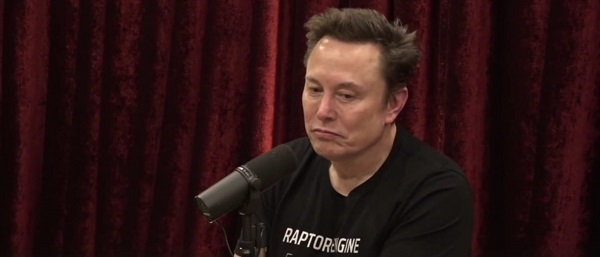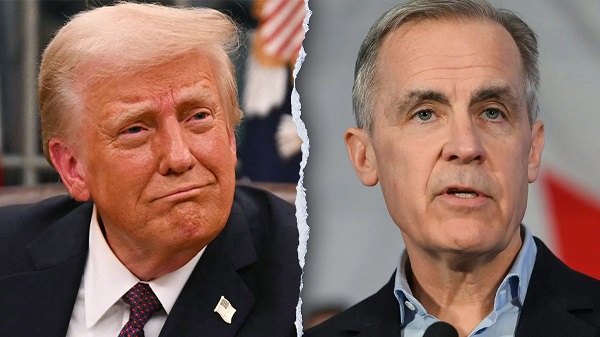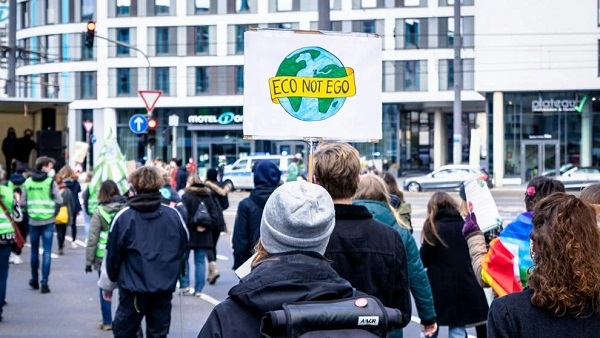Environment
Journalism Misrepresent Climate Science
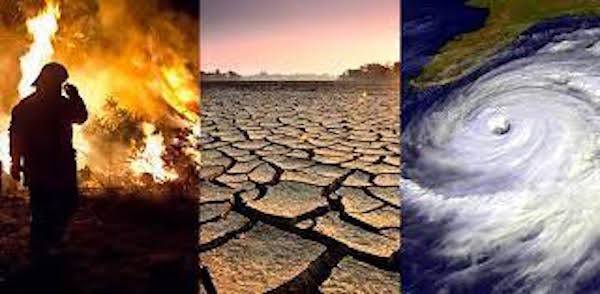
From EnergyNow.ca
By Jim Warren
So-called “climate realists” including , Bjørn Lomborg, have long held that climate activists and journalists exaggerate and misrepresent the threat presented by climate change.
In the latest edition of his book, False Alarm: How Climate Change Panic Costs Us Trillions, Hurts the Poor, and Fails to Fix the Planet, Lomborg muses, “Recently the media has [mis] informed us that humanity has just a decade left to rescue the planet, making 2030 the deadline to save civilization.”
This column proposes that the milieu of media hyperbole and fear that Lomborg describes has indeed contributed to the overly zealous climate change policy regime the federal government is imposing on western Canada’s agriculture and energy industries.
One of the clearest examples of media and activist misinterpretations of climate science involves the 2019 release of the Intergovernmental Panel on Climate Change (IPCC) Special Report on Climate Change and Land (SRCCL). The report’s release launched a flurry of wildly inaccurate mainstream media stories and social media posts that misrepresented its actual contents.
My initial interest in the report on land and climate change was influenced by the fact a colleague of mine at the University of Regina was one of the scholars selected by the IPCC to help produce it. And, given that the report would be addressing land use, food production and food security, I assumed it would likely have things to say that were relevant to agriculture in Saskatchewan.
Work on the SRCCL began in April of 2016. It was one of three special reports that would be incorporated into the IPCC’s Sixth Assessment Report, set for release in 2021. (The IPCC has been publishing Assessment Reports once every four to five years since 1988. They are its principal vehicle for presenting an overview of scientific assessments of climate change to the world.)
The mandate of the special report on climate and land was to explore the relationships between land use, land degradation, desertification, deforestation and climate change as well as the impacts of those relationships on global food security.
The executive summary for the report was released on August 8, 2019 at a news conference held in Geneva, Switzerland. I made a point of reading the summary the day it was released because I hoped to refer to it in an informed way the next time I met next with my colleague. (The IPCC refers the executive summary as the Summary of Policymakers).
By the evening of August 8, the distortion of reality was already underway. I encountered a number of the media stories describing the report that had little or nothing to do with the 107 findings and recommendations that appear in the Summary for Policymakers. Many of the stories led with the assertion that the report’s key message was the need to limit red meat consumption. According to my reading of the report this was patently incorrect—reducing red meat consumption was not a central theme of the report.
The journalists responsible for some of the stories were mistaken, or worse yet, making up things. As it happened, a number of climate scientists also recognized the disconnect between what the media were saying about the report and what the report actually said. In August 2021, the academic journal, Climate Change, published an article by Oxford University academic Mary Sanford and three co-authors about the controversy surrounding the way traditional media and activists on Twitter had characterized the report.
Sanford and her co-authors report that “five UK-based media organizations whose websites are amongst the most used and trusted led their coverage on the SRCCL with a focus on eating less meat in their headlines.”
The offending UK media outlets included the BBC, The Telegraph, The Mail, The Times and The Independent. Sanford’s group gave special mention to “The BBC’s article on 8 August headline ‘Plant-based diet can fight climate change – UN’.” The global reach of inaccurate coverage was bolstered by the London-based Reuters news agency which “led one of its main articles on the SRCCL with the headline ‘U.N. flags need to cut meat to curb land use impact on global warming’.”
In the U.S., articles in Time magazine, the Wall Street Journal and Vox all led with comments critical of the climate effects of meat eating or other negative aspects of the meat industry.
The headline for the August 8 CBC story on the report read, “Farming and eating need to change to curb global warming.” Although, in the body of the story itself dietary change doesn’t come up until the third paragraph and meat consumption is not specifically mentioned.
Some traditional media organizations did better. Fox News, The New York Times, and The Washington Post ran articles that addressed the report’s principal themes such as the bidirectional effects of land use practices on the climate and the impact of a changing climate on the sustainability of land use practices and the global food supply. Some like CNN provided reasonably accurate coverage in their initial August 8 reports but in subsequent days gave dietary change greater attention.
Contrary what many of the media reports suggested, several of the findings and recommendations in the Summary for Policymakers actually recognize the importance of well-managed livestock grazing to sustainable food production and biodiversity. One of the findings indicates that grazing lands provide habitat for a far greater range of plants and animals than annual field-crop agriculture. Another finding notes the carbon sink value of grassland. One of the findings regarding diet notes the important role animal protein plays in the food system. Another point recommends diversity in diets and the beneficial role played by public health dietary guidelines. At the same time the report does acknowledge that ruminant livestock (cattle, bison, sheep and goats) produce methane emissions that contribute to the greenhouse effect. But according to the report that fact does not mean we need to cease raising ruminants for food.
One needs to dive much deeper into the 910 page report than the executive summary to find any discussion about the effects of meat consumption on the climate or the food supply. In Chapter 5 the report surmises that if everyone on the planet ate as much beef as the average resident of the UK, 95% of the world’s agricultural land would be required to support meat production. And, it mentions there is academic literature which recommends reducing the consumption of animal food products while increasing the proportion of plant-based food in diets.
Chapter 5 also has a paragraph that suggests red meat consumption could potentially be reduced with the development of plant-based meat substitutes. And, in case you were wondering where Prime Minister, Justin Trudeau and the environment and climate change minister, Steven Guilbeault, get some of their more novel ideas, there is indeed a sentence in the report that suggests we might be able to make greater use of insects for food. Yep, you read that right. Buried in Chapter 5, a single sentence on insect eating is presented as a sort of blue sky idea that might help reduce red meat consumption.
It is safe to say consumption of red meat was not a significant theme in the report and eating meat was not categorically condemned. The report supports well-managed sustainable livestock grazing and recognizes the dietary importance of red meat.
As one might expect, news reports focusing on diet and meat consumption were condemned by agricultural organizations such as the UK’s National Farmers’ Union. The tenor of the news stories was also a cause of alarm for the IPCC. I met with my colleague the week of the report’s release and asked her if the IPCC was aware of the distortions in the media coverage. She said that they were and acknowledged it was a problem since the media’s focus on diet and red meat detracted from their efforts to have the actual findings of the report publicized.
No less important than identifying the inaccuracies in the news stories about the SRCCL is understanding how and why the reporting was so bad. There are a number of possibilities. One is that many journalists were simply too busy or too lazy to actually read the Summary for Policymakers before writing their stories. We might also suspect many relied on their personal world-views and preconceived ideas about what they thought they should say. Worse yet they might have actually read the report and intentionally misrepresented its contents. A good follow up question might be what are the origins of journalists’ established views on climate change and meat consumption?
Sanford and her co-authors make an effort to get at these questions and propose that many journalists’ mindsets are influenced by social media. They suggest the January 2019 release of a report published by the EAT-Lancet Commission was still fresh in many journalists’ minds when they wrote about the SRCCL in August that same year. The EAT-Lancet report was produced by 37 scientists in association with the medical journal, The Lancet, and promoted itself as “the first full scientific report of what constitutes a healthy diet from a sustainable food system that can support and speed up food system transformation.” (By way of comparison the SRCCL report was generated by 330 scientists and social scientists – more than 1,500 scientists contribute to the IPCC Assessment Reports).
The EAT-Lancet report does indeed recommend a reduction in global meat consumption. It is noteworthy that it does not advocate for the end of meat and dairy consumption but does support vegetarianism and veganism.
The EAT-Lancet report states: “The planetary health diet is a global reference diet for adults that is symbolically represented by half a plate of fruits, vegetables and nuts. The other half consists of primarily whole grains, plant proteins (beans, lentils, pulses), unsaturated plant oils, modest amounts of meat and dairy, and some added sugars and starchy vegetables. The diet is quite flexible and allows for adaptation to dietary needs, personal preferences and cultural traditions. Vegetarian and vegan diets are two healthy options within the planetary health diet but are personal choices.”
According to Sanford and her co-authors, the publication of the EAT-Lancet report coincided with growing interest in veganism and the popularization of “reports associating meat eating and livestock farming with a range of negative impacts, particularly on GHG (methane) emissions.”
By the time the IPCC released its SRCCL report the EAT-Lancet report had generated over eight million Twitter posts. While the reaction on Twitter was divided between supporters and opponents of vegetarianism, the participation of anti-livestock vegan and vegetarian activists was clearly influencing the discussion. Sanford and company propose that views critical of meat consumption were likely shaping the attitudes of journalists.
A number of studies have described the symbiotic relationship that exists between journalists and Twitter. Journalists use Twitter to post comments and links to their own stories. They also use it to inform the news stories that they write. Furthermore, journalists constitute the largest user category on Twitter, accounting for 26% of the platform’s verified accounts. Journalists and news organizations are frequent tweeters. A 2022 article in Editor and Publisher, an online publication, states that 70% of journalists claim Twitter is the first or second social media site they use most frequently in their jobs. They make posts about the content they produce and have more followers than any other verified user groups on Twitter.
In 2018, an article in the Columbia Journalism Review expressed alarm over the reliance journalists were placing on Twitter as a source for their work. Especially worrisome was the fact some journalists claimed to place more reliance on anonymous tweets than information provided by The Associated Press. The quality of journalism is bound to suffer if reporters rely on the claims of activists with agendas that don’t include dissemination of unvarnished objective evidence. The danger is that this can produce a cycle of garbage in garbage out journalism.
We can reasonably assume that at least some journalists writing articles in the week following the release of the SRCCL were influencing the discussion on Twitter and were in turn influenced by it. However, the data presented by the Sanford group also suggests that journalist-Twitter cross fertilization was occurring in only two corners of the Twitterverse.
It is hardly surprising that the research shows when it comes to issues related to the IPCC and climate change, social media posts reflect the culture wars occurring in wider society. Social media posts about climate change occur within two polarized echo chambers. There is the activist group who embrace the idea that climate change is a real and urgent problem threatening life on the planet. Some members of the activist faction claim climate change is the greatest threat facing humanity and nature. And, then there is the skeptic faction that includes those who claim the science on climate change is uncertain and the dangers are frequently exaggerated. And, it’s true some members of the skeptic group assume human caused climate change is a hoax.
Social scientists often feel the need to invent jargon to describe social phenomena. One of the concepts they use to explain the climate divide on Twitter is “homophily,” the tendency for people to be attracted to and seek out others who are similar to themselves – and share their opinions. Added to this is “confirmation bias,” the tendency of people to accept new information when it confirms their pre-existing beliefs and reject ideas that contradict those beliefs.
Sanford and her co-authors systematically parsed over 6,000 Twitter posts related to the SRCCL. They show that most of the discussion on Twitter was indeed contested by the usual suspects. There was a skeptic camp who criticized the IPCC “for in their view slandering the meat and dairy industries, and trying to take away their right to eat meat.” And there was an activist group, which included vegans and vegetarians who criticized meat eaters for contributing to climate change.
Given the actual content of the Special Report on Climate and Land, the content of the Twitter war makes absolutely no sense. The skeptics were incensed over things the report never actually said and the activists defended it for things it didn’t actually say. Particularly troubling for people who hope for objective unbiased reporting is that journalists tended to side with the inaccurate assessments being made by the activist camp. As we’ve seen, many of them wrote stories that identified diet and meat eating as the focus of the report. Both vegan activists and sympathetic journalists would have come closer to “their own truth” had the news stories criticized the IPCC for failing to pay enough attention to diet and meat eating.
It is disturbing to learn objective reality had such a minimal impact on the Twitter debate or the journalists writing inaccurate stories. It was a case of homophily and confirmation bias on steroids. People simply chose sides based on their usual positions regardless of actual facts and evidence. It was wearing the team colours that really counted.
For people who rely on agriculture or jobs in the energy sector for their livelihoods the current quality of media articles and discussions on social media in relation to climate change is not very comforting. In Canada, the problems may well be exacerbated by the federal government’s subsidization of traditional media organizations. The agendas of strident environmental activists and the federal government’s climate policies often coincide. Given the incestuous relationship between journalists and environmental activists on Twitter it is perhaps understandable that traditional media, environmental activists and the federal government often sing from the same hymn book. For people who practice healthy skepticism, the fact our federal government is subsidizing the news media is grounds for suspicion about the veracity of Canadian journalism.
Unfortunately coming up with effective strategies for combating widely-held misconceptions about climate change in traditional and social media is a daunting challenge. The problem is unlikely to be remedied any time soon.
Jim Warren is an Adjunct Professor and Lecturer in environmental sociology at the University of Regina.
Censorship Industrial Complex
Misinformed: Hyped heat deaths and ignored cold deaths
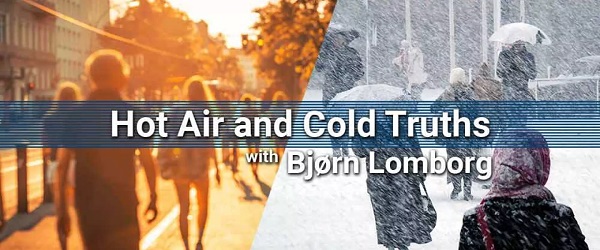
From the Fraser Institute
Whenever there’s a heatwave—whether at home or abroad—the media loves to splash it. Politicians and campaigners then jump in to warn that climate change is at fault, and urge us to cut carbon emissions. But they are only telling us one-tenth of the story and giving terrible advice.
Global warming indeed causes more heat waves, and these raise the risk that more people die because of heat. That much is true. But higher temperatures also cause a reduction in cold temperatures, reducing the risk that people die from the cold. Almost everywhere in the world—not just Canada—cold kills 5-15 times more people than heat.
Heat gets a lot of attention both because of its obvious link to climate change and because it is immediately visible—meaning it is photogenic for the media. Heat kills within a few days of temperatures getting too high, because it alters the fluid and electrolytic balance in weaker, often older people.
Cold, on the other hand, slowly kills over months. At low temperatures, the body constricts outer blood vessels to conserve heat, driving up blood pressure. High blood pressure is the world’s leading killer, causing 19 per cent of all deaths.
Depending on where we live, taking into account infrastructure like heating and cooling, along with vehicles and clothes to keep us comfortable, there is a temperature at which deaths will be at a minimum. If it gets warmer or colder, more people will die.
A recent Lancet study shows that if we count all the additional deaths from too-hot temperatures globally, heat kills nearly half a million people each year. But too-cold temperatures are more than nine-times deadlier, killing over 4.5 million people.
In Canada, unsurprisingly, cold is even deadlier, killing more than 12 times more than heat. Each year, about 1,400 Canadians die from heat, but more than 17,000 die because of the cold.
Every time there is a heatwave, climate activists will tell you that global warming is an existential problem and we need to switch to renewables. And yes, the terrible heat dome in BC in June 2021 tragically killed 450-600 people and was likely made worse by global warming. But in that same year, the cold in BC killed 2,500 people, yet these deaths made few headlines.
Moreover, the advice from climate activists—that we should hasten the switch away from fossil fuels—is deeply problematic. Switching to renewables drives up energy prices. How do people better survive heat? With air conditioning. Over the last century, despite the temperature increasing, the US saw a remarkable drop in heat deaths because of more air conditioning. Making electricity for air conditioning more expensive means especially poorer people cannot afford to stay cool, and more people die.
Likewise, access to more heating has made our homes less deadly in winter, driving down cold mortality over the 20th century. One study shows that cheap gas heating in the late 2000s saved 12,500 Americans from dying of cold each year. Making heating more expensive will consign at least 12,500 people to die each year because they can no longer afford to keep warm.
One thing climate campaigners never admit is that current temperature rises actually make fewer people die overall from heat and cold. While rising temperatures drive more heat deaths, they also reduce the number of cold deaths — and because cold deaths are much more prevalent, this reduces total deaths significantly.
The only global estimate shows that in the last two decades, rising temperatures have increased heat deaths by 0.21 percentage points but reduced cold deaths by 0.51 percentage points. Rising temperatures have reduced net global death by 0.3 per cent, meaning some 166,000 deaths have been avoided. The researchers haven’t done the numbers for Canada alone, but combined with the US, increased temperatures have caused an extra 5,000 heat deaths annually, but reduced the number of cold deaths by 14,000.

If temperatures keep rising, cold deaths can only be reduced so much. Eventually, of course, total deaths will increase again. But a new near-global Nature study shows that, looking only at the impact of climate change, the number of total dead from heat and cold will stay lower than today almost up to a 3oC temperature increase, which is more than currently expected by the end of the century.
People claim that we will soon be in a world that is literally too hot and humid to live in, using something called the “wet bulb” temperature. But under realistic assumptions, the actual number of people who by century’s end will live in unlivable circumstances is still zero.
The incessant focus on tens or hundreds of people dying in for instance Indian heatwaves makes us forget that even in India, cold is a much bigger challenge. While heat kills 89,000 people each year, cold kills seven times more at 632,000 every year. Yet, you would never know with the current climate information we get.
Hearing only the alarmist side of heat and cold deaths not only scares people—especially younger generations—but points us toward ineffective policies that drive up energy costs and let more people die from lack of adequate protection against both heat and cold.
Bjørn Lomborg
Bjorn Lomborg
We need to get smart about climate
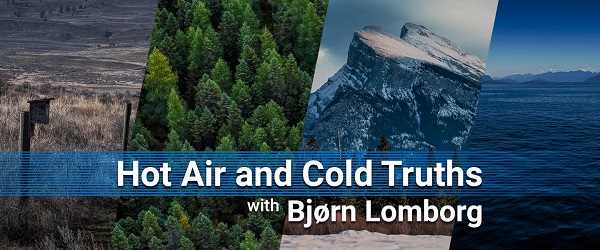
From the Fraser Institute
APPEARED IN THE FINANCIAL POST
By: Bjørn Lomborg
Canada’s chattering classes claim that climate change is one of the country’s pre-eminent threats. This is extraordinary. Canada is experiencing a productivity slowdown, the worst decline in living standards in 40 years, and growth rates that lag most developed economies. Geopolitical threats loom, the healthcare system is under stress and education is faltering. Yet the federal government has spent or committed more than $160 billion on climate initiatives since 2015, and is funneling $5.3 billion to help poor countries respond to climate change.
Like most nations, Canada faces tough decisions in coming decades. Resources spent on climate will not be not available for health, education, security or boosting prosperity.
Global warming is a real problem. Science has shown quite clearly that more CO₂, mostly from fossil fuel use, increases global temperatures. Climate economics has shown how this brings both problems and benefits (for instance, more deaths caused by heat, fewer by cold) but, overall, more problems than benefits. More CO₂ means higher social costs, so reducing CO₂ does have real benefits.
But climate policies also have costs. They force families and businesses to use more expensive energy, which slows economic growth. You might have heard otherwise but if the new ways really were cheaper, no regulations or mandates would be needed.
If climate change were treated like any other political issue, we would openly recognize these trade-offs and try to balance them to get the most climate benefits for the least cost, recognizing that climate policies need to compete against many other worthy policies.
But in two important ways the climate conversation has gone off the rails.
First, people say — wrongly — that global warming is an existential challenge, risking the end of mankind. Of course, if the world is about to end, it follows that any spending is justified. After all, if a world-obliterating meteor is hurtling towards us, we don’t ask about the costs of avoiding it.
Second, it is also often claimed — somewhat contradictorily — that the green transition will make energy cheaper, societies safer and everyone richer. In this “rainbows and unicorns” scenario, there are no trade-offs and we can afford climate policy and everything else.
Both claims are repeated ad nauseam by Canadian politicians and activists and spread by media hooked on selling climate catastrophes and green utopias. But both are quite untrue.
That is why I’m writing this series. I will outline how many of the most sensationalist, scary climate stories are misleading or wrong and ignore the best climate science. Being data-driven, I will show you this with the best peer-reviewed data and numbers.

So: Is climate change the world’s all-encompassing problem today? One way to test this is to look at extreme weather, which we constantly hear is having an ever-larger impact on our societies. But the data paint a very different picture (see chart).
We have good evidence for the number of people killed in climate-related disasters, i.e., floods, storms, droughts, and fires. (We’ll look at temperature deaths next week.) A century ago, such disasters routinely killed hundreds of thousands, even millions of people in a single disaster. On average, about half a million people a year died in such disasters. Since then, the death toll has declined precipitously. The last decade saw an average of fewer than 10,000 deaths per year, a decline of more than 97 per cent.
Of course, over the past century the world’s population has quadrupled, which means the risk per person has dropped even more, and is now down by more than 99 per cent. Why this great success story? Because richer, more resilient societies with better technology and forecasting are much better able to protect their citizens. That doesn’t mean there is no climate signal at all, but rather that technology and adaptation entirely swamp its impact.
In the same way, climate’s impact on overall human welfare is also quite small. In proportion to the total economy, the cost of climate-related disasters has been declining since 1990. Looking to the future, the best estimates of the total economic impact of climate change come from two major meta-studies by two of the most respected climate economists. Each shows that end-of-century GDP, instead of being 350 per cent higher, will only be 335 per cent higher.
“Only” becoming 335 per cent richer is a problem, to be sure, but not an existential threat. Despite that, as this series will show, many of the most draconian climate policy proposals so casually tossed around these days will do little to fix climate but could dramatically lower future growth and the opportunities of future generations.
We need to get smart on climate. This series will map out how.
-
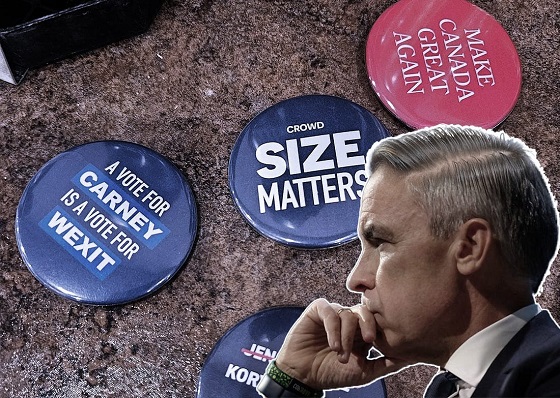
 2025 Federal Election2 days ago
2025 Federal Election2 days agoInside Buttongate: How the Liberal Swamp Tried to Smear the Conservative Movement — and Got Exposed
-

 International2 days ago
International2 days agoTulsi Gabbard tells Trump she has ‘evidence’ voting machines are ‘vulnerable to hackers’
-

 COVID-191 day ago
COVID-191 day agoCOVID virus, vaccines are driving explosion in cancer, billionaire scientist tells Tucker Carlson
-
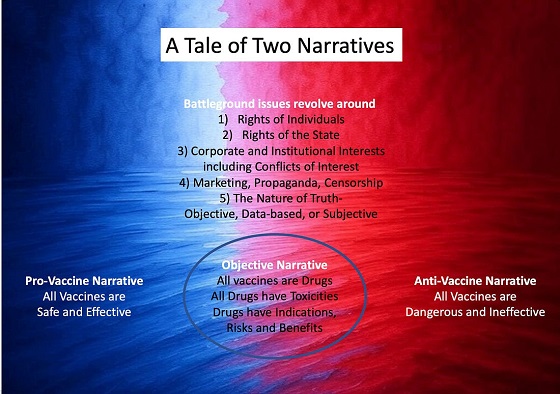
 Dr. Robert Malone2 days ago
Dr. Robert Malone2 days agoThe West Texas Measles Outbreak as a Societal and Political Mirror
-

 Health2 days ago
Health2 days agoHorrific and Deadly Effects of Antidepressants
-

 Bruce Dowbiggin1 day ago
Bruce Dowbiggin1 day agoIs HNIC Ready For The Winnipeg Jets To Be Canada’s Heroes?
-

 illegal immigration1 day ago
illegal immigration1 day agoDespite court rulings, the Trump Administration shows no interest in helping Abrego Garcia return to the U.S.
-

 2025 Federal Election4 hours ago
2025 Federal Election4 hours agoRCMP Whistleblowers Accuse Members of Mark Carney’s Inner Circle of Security Breaches and Surveillance






